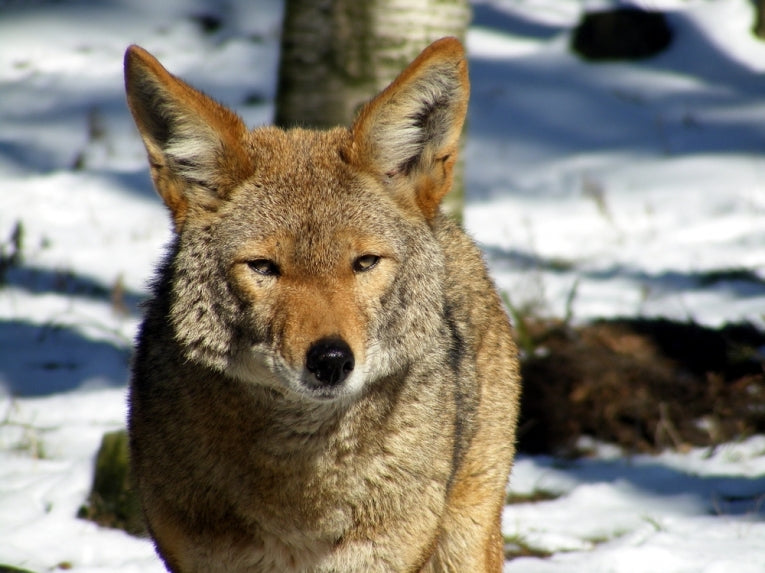Those colonists have gone and done it again, George. The Smithsonian Conservation Biology Institute's Center for Conservation in Washington DC have evidence that we really put the cat among the pigeons when we messed up the west. Or rather the coyote among the wolves. The poor old red wolf (Canis rufus)..

Red Wolf via Shutterstock
..sits there in Carolina in dire danger of extinction because it can't resist those pretty little coyotes. And those poor GLW (Great Lakes Wolves) got really messed up when the coyotes reached the north. Wolf conservation, re-introduction and extinction has been a hot topic for generations. And now it turns out to be our fault that the coyotes (Canis lantra) spread out from the West and colonised our habitat - the urbanised environment. Now you never hear of coyote preservation. This species has kept its cool. Unless we feed wildlife, they don't come close, but they love the new habitats we make. No trees apparently suit the coyote's hunting methods. It's much easier to pick up a small mammal snack if it's got nowhere to hide in dense forest.
Scat from coyotes in three counties of northern Virginia was gathered to extract the intestinal cell DNA then DNA from preserved wolf specimens that lived in the Great Lakes was compared to it. Canid species are most liable to hybridise when one species is rare and mating becomes impossible with their own species. The cross-breeds have a wolfish jaw that could influence their niche so that large game such as the abundant deer could be scavenged, for example. The evidence shows that the coyote started with a small base in the mid-west, then crossed the Mississippi in a least two places. Then, "the Mid-Atlantic region is a particularly interesting place because it appears to mark a convergence in northern and southern waves of coyote expansion," said Christine Bozarth, an SCBI research fellow and lead author on the paper.

Credit: © The American Society of Mammalogists
"I like to call it the Mid-Atlantic melting pot." She says the Great Lakes wolves' genes are present in one of seven "haplotype" groups she found in Virginia.
The dramatic range expansion of the coyote since the 17th century contrasts with the demise of both the grey wolf (Canis lupus) and the more eastern-based red wolf (Canis rufus) (now only in an area of 6000 km2 in N. Carolina). As we said above, the latter will become extinct unless it can be stopped breeding with coyotes. Great interest lies with the early (and the later) colonists' anthropogenic influences. Eradication of top predators (including of course the cougar and the wolf itself), habitat modification and even transporting of coyotes has helped the animal establish itself throughout a range from Panama ( Bekoff 1977) to Alaska! Some coyotes have been domesticated or used for hunting, with a recorded sample translocation of western coyotes occurring in 1925.
The full research paper can be read in the Journal of Mammalogy.










